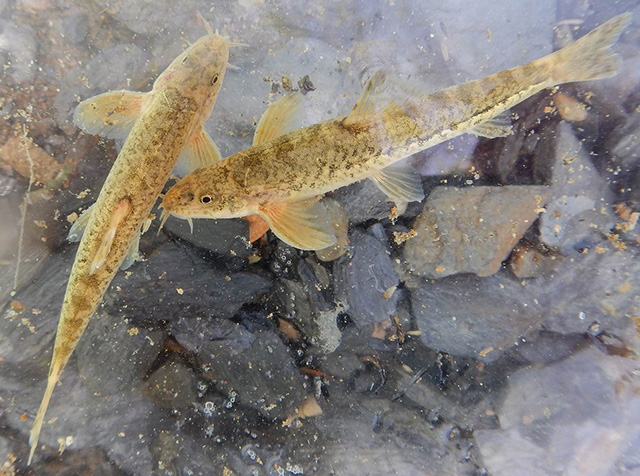|
This species is distinguished from other species of the O. angorae group by the following characters, but none is unique to the species: differs from O. anatolicus, O. angorae, O. eregliensis, O. isauricus, O. germencicus, O. nasreddini by having an almost uniform body depth between the dorsal- and caudal-fin bases, or body depth very slightly decreasing, with depth of caudal peduncle 87-97% of body depth at anterior-most dorsal fin base (vs. 68-79 in O. anatolicus, 70-83 in O. angorae and O. eregliensis, 72-82 in O. germencicus, 60-77 in O. isauricus, 70-86 in O. nasreddini); further differs by having a moderately deep caudal peduncle, its depth 1.3-1.6 times in length (vs. 1.5-1.8 in O. angorae and O. germencicus, 1.5-1.9 in O. eregliensis, 2.2-2.6 in O. isauricus, 1.5-2.1 in O. nasreddini), an emarginate caudal fin, with middle caudal-fin ray 71-80% of length of longest upper caudal-fin ray (vs. slightly emarginate or almost truncate, 84-93 in O. anatolicus, 88-92 in O. angorae, 83-91 in O. eregliensis and deeply emarginate, 65-76 in O. mediterraneus), no depigmented stripe along the anterior part of the lateral line (vs. usually present in O. angorae); differs further from O. mediterraneus by the tip of pectoral fin not reaching the pelvic-fin origin in male (vs. usually reaching) (Ref. 131061). |
